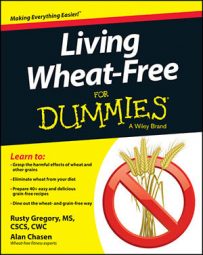Read on to find out how wheat consumption can affect your cholesterol levels. Probably the best test for LDL particle number is called the nuclear magnetic resonance (NMR) test. It uses a simple blood test that can be drawn at all major labs.
Although most people treat LDL as one reading, it actually has two components: LDL-C and LDL-P. The C in LDL-C represents cholesterol. This marker is the total amount of cholesterol being carried in the blood but doesn't indicate how it's being carried (whether it's all in one car or divided up among several cars, so to speak). LDL-P (the P is for particles) actually gives an exact measurement of how many cars there are.
LDL-P is perhaps the earliest warning sign of insulin resistance. It usually precedes increased blood glucose levels and increased insulin levels by several years.
Soon after the LDL particle gets into the artery wall, oxidative (damaging) forces occur that tell the body to send help to get the LDL out of there. Special cells are sent in (monocytes, macrophages, and mast cells, if you're curious) to investigate. If they find few LDL particles, all is well.
Too many LDL particles means the special cells can remove some but not all of them. The body realizes it's losing the battle, and the damage expands deeper only to have the body cover up the LDL with smooth muscle cells. This process causes the artery to narrow.
In essence, it's a numbers game. The more LDL particles, the greater the chance they end up in the walls of the artery, causing inflammation and plaque.
Check out everything that can raise your LDL-P number:
A diet high in wheat and grain, processed and refined carbohydrates, sugar, and high-omega-6 vegetable oils
A sedentary lifestyle
Chronic sleep deprivation
Environmental toxins
Poor gut health
Poor thyroid function or low T3 levels ( T3 is the most active form of thyroid hormone)
Genetics
In addition to measuring the LDL particle number, the NMR test tells you whether your LDL particles and HDL particles are big and fluffy or small and sticky. The idea is that the big and fluffy particles have a much harder time sticking to the artery walls, while the small, sticky, dense particles can wedge themselves easily into the artery walls.
Although these subtypes of the LDL particles provide more details for the big picture, research seems to show that they're still not as important as the total particle number. Although large, fluffy particles are better than small particles, high levels of large particles can lead to heart disease.
Your wheat and grain intake makes LDL particles small and sticky, so when you're looking at the overall picture of your health and diet, this is one more strike against the conventional recommendations.
Even though the NMR test is the best current method available for testing particle number, the results can vary for the same reasons that regular blood lipid panels can vary. Taking one test can only give you a piece of the puzzle. Getting an average from several tests is the optimal way to gauge your risk.

